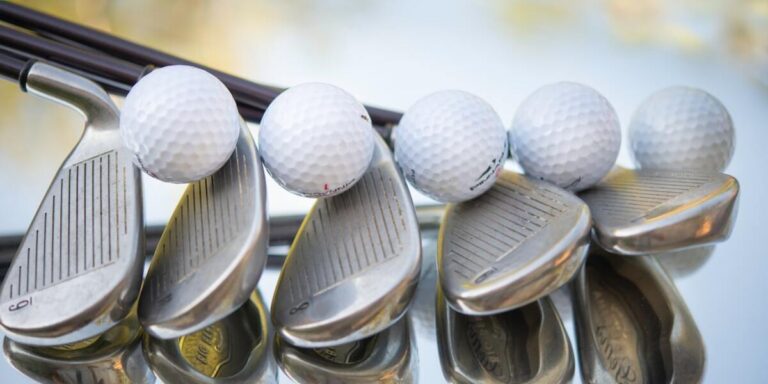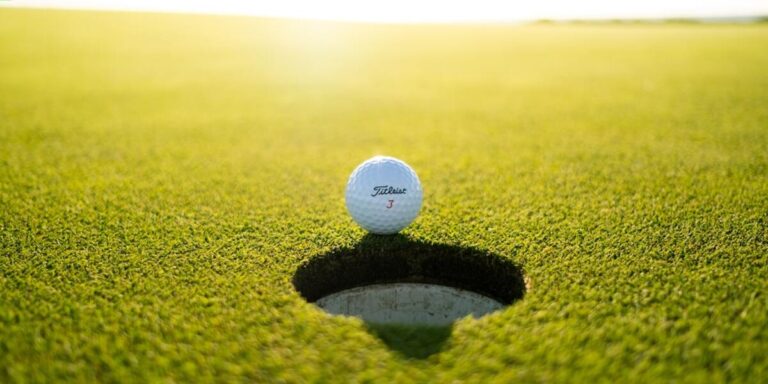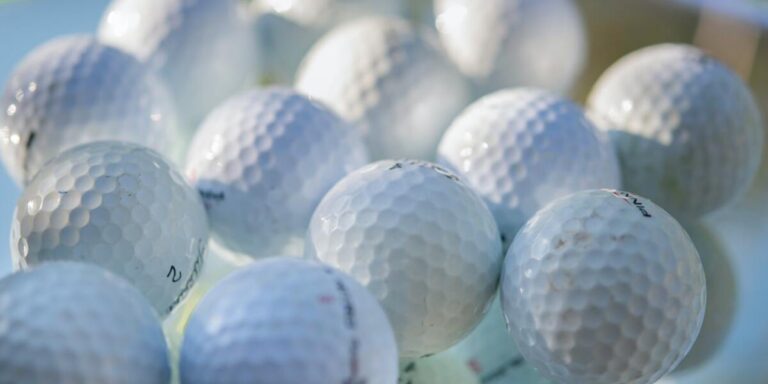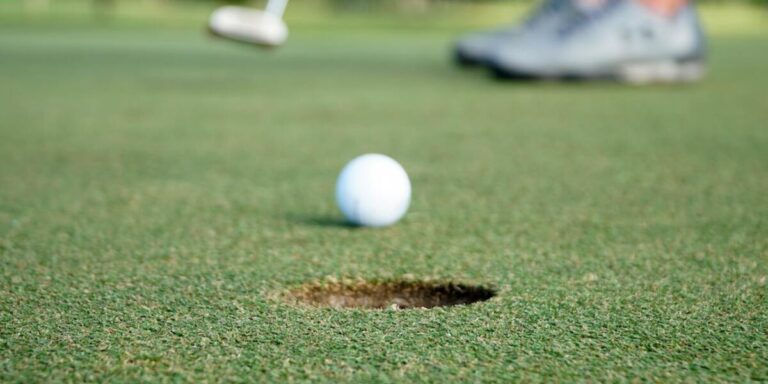What causes too much spin on a golf ball?
There are many factors that can cause a golf ball to spin too much. One of the most common is using a golf ball with too low of a spin rate. Low spin golf balls are typically designed for players with high swing speeds and can cause the ball to spin out of control if you don’t have the necessary clubhead speed. Another common reason for excessive spin is improper club fitting. If your clubs are too long or too short, it can throw off your entire swing and cause the ball to over-spin. Finally, poor shot selection can also lead to higher than desired spins rates. Shots hit from heavy rough or deep bunker situations will almost always come out hot and spinning wildly. The next time you find yourself spraying the ball all over the course, take a look at your equipment and make sure everything is properly fit before heading back to the range
– The Different Types of Low Spin Golf Balls
There are many different types of low spin golf balls on the market today. Each type has its own advantages and disadvantages. Here is a look at the different types of low spin golf balls:
1. Pro V1 Golf Balls: These golf balls are designed for professional players who want to minimize spin and maximize distance. They are one of the most popular choices among Tour professionals. However, they can be quite expensive, so they may not be the best choice for casual players or beginners.
2. Titleist AVX Golf Balls: These golf balls are designed to provide maximum distance with minimal spin. They have a soft feel and offer excellent forgiveness on shots that miss the sweet spot. However, they may not provide as much control as some other types of golf balls.
3rd Callaway Chrome Soft X Golf Balls: Theseballs try tomimic the flight patternand performance characteristics of a Titleist Pro V1 ball without being as expensive While achieving this goal to an extent, some say it doesn’t live up tothe standard set by its predecessor
– How to Use Low Spin Golf Balls for Maximum Effectiveness
If you’re looking to add more distance to your drives, then low spin golf balls may be the answer. By reducing the amount of backspin on your shots, you can hit the ball further than with traditional golf balls. But how do you know which low spin ball is right for you? And how can you use them effectively to get the most out of your game?
There are a few things to consider when choosing a low spin golf ball. First, think about what type of player you are. If you’re a beginner or high handicapper, then a softer-compression ball will likely work best for you. However, if you’ve got some experience under your belt and generate plenty of clubhead speed, then a harder-compressed ball may suit your needs better. It’s also important to choose a ball that has good reviews from other players; this will give you an idea of its quality and performance characteristics.
Once you’ve selected the right low spin golf ball for your game, it’s time to start using it effectively. One tip is to tee up slightly higher than normal when using these balls; this will help launch them into the air more easily so they can carry further down the fairway. You may also want
– Why a lot of Tour Pros are Switching to Low Spin Golf Balls
1. A lot of Tour pros are making the switch to low spin golf balls, and there are several reasons why. Low spin golf balls tend to fly further and straighter than their higher spinning counterparts, making them ideal for players who want to maximize their distance off the tee. In addition, low spin golf balls often have a softer feel thanks to their lower compression cores, which can be a big advantage for players with slower swing speeds who struggle to generate enough power with regular golf balls.
2. Of course, not every Tour pro is going to benefit from switching to a low spin ball – it depends on individual playing styles and preferences. However, for those players who find themselves regularly fighting a slice or hook due to highspin rates, switchingto alow spingolf ballcould be just what they needto taketheir game tomthe nextlevel.
3 .At the end of the day , it’s importantto experimentwith different typesofgolfballs until you find one that suits your style of play . There’sno harm in trying alow spingolfballif you thinkit could help improve yourgame –you might be surprised at how much difference it makes!
– 3 Myths About Low Spin Golf Balls Debunked
When it comes to golf balls, there are a lot of myths and misconceptions out there. Many golfers believe that low spin golf balls are only for pros, or that they’re not as effective as regular balls. But the truth is, low spin golf balls can be a great option for all kinds of players. Here are three myths about low spin golf balls debunked:
Myth #1: Low Spin Golf Balls Are Only for Pros
Many people believe that low spin golf balls are only for professional players. However, this isn’t true! While low spin balls may have initially been designed with pros in mind, they can be beneficial for all kinds of players. Low spin golf ballscan help you achieve more distance, better control, and improved accuracy. So whether you’re a pro or an amateur golfer, don’t be afraid to give them a try.
Myth #2: Low Spin Golf Balls Aren’t As Effective As Regular Balls
Another common myth is that low spin golfballs aren’t as effective as regular ones. But the truth is ,lowspingolfballdo offer many benefits . For example ,they usually travel further thandistancedrivingballsthey provide morecontrol aroundthe greensandthey tendto stay straighterin the air(which reduces hookedor sliced shots ).So if you’re lookingfor agoodall-aroundperformanceswingingball ,lowspingolf ballsmay bethe right choiceforyou !
Myth#3 :You NeedSpecial Clubs To UseLow SpinGolfBalls
Oneof The main reasonswhy somepeople shy awayfrom usinglow spingolfballsis because they thinkyou need somesort specialclub
– Do You Really Need a Low Spin Ball? Find Out Here!
Do you really need a low spin golf ball? Many golfers believe that Low Spin technology will help their game by giving them more distance, but is this really the case? Find out here!
First, let’s understand what Low Spin technology is. A typical golf ball has dimples on its surface which help to create lift and drag forces as it moves through the air. The amount of lift and drag generated depends on the depth and pattern of the dimples, as well as the speed of the ball.
Low Spin balls are designed to reduce the amount of lift created, resulting in a flatter trajectory and more distance. However, this comes at the expense of accuracy; because there is less Lift force acting on the ball, it is harder to control where it will go. So if you’re looking for more distance off the tee, a low spin ball may be right for you – just be prepared to sacrifice some accuracy in exchange.
– Surprising Benefits of Playing with aLow Spin Ball
Who would have thought that playing with a low spin ball could offer so many benefits? Here are three surprising advantages of using this type of ball:
1. Increased Distance: Low spin balls typically fly further than their high spin counterparts. This is due to the fact that they produce less drag, allowing them to better penetrate through the air. If you’re looking to add a few extra yards off the tee, switch to a low spin golf ball.
2. More Precise Shot-Making: Because low spin balls don’t travel as far as high spin balls when hit off-center, they can actually help improve your precision and accuracy. If you’re struggling with your iron play or tend to miss fairways often, give a low spin golf ball a try – it just might help you straighten things out!
3. Greater Feel and Control around the Greens: Many Tour professionals prefer using lower spinning balls for shots inside 100 yards because they provide more control and feel on delicate approach shots and recoveries from tough lies . So if you’re looking to improve your scoring area , make the switch to alow_spin _golfball
It’s time to reap the benefits of playingwithalow spingolfball !
Frequently Asked Question
-
What causes too much spin on a golf ball?
-
What do low spin golf balls do?
-
Does more spin mean more distance?
-
Do you want more or less spin on driver?
-
Is your response a low spin ball?
-
Who should use a low spin driver?
-
What causes too much driver spin?
-
Does a stiffer shaft reduce spin?
-
What happens if driver spin is too low?
-
What golf ball stops on the green best?
-
Does a softer golf ball spin more?
-
Do low spin drivers reduce slice?
-
What is a good golf ball spin rate?
-
Do low spin golf balls reduce slice?
-
Do soft golf balls go straighter?
No matter how fast the clubhead travels, any swing that is either flat or upward at impact will result in more backspin. Backspin is created when the clubhead swings downwards faster.
The lower spindle golf ball can increase distance and reduce curvature. These balls work well for both beginners and those with high handicaps. They are also used by many low- to middle handicappers.
The spin rate is a significant factor in the distance and height of shots. In windy situations, spin rate is often overlooked. High spin rates are a problem, especially when you’re hitting into the wind. A lower-lofted club can reduce spin.
A high spin rate can lift the ball to the top of your sky. This will create a great landing angle and height. A low spin rate can cause the ball to fall from the sky and create a lower landing angle.
This means that there is more carry. Although it’s a simplified description, the Tour Response could be described as a low-launch and high-spin product. It was ranked among the best-spinning urethane balls in our 2021 Ball Test.
A low-spin driver is a great option if you are able to swing fast and have your ball rise in the air. This will give your shot a deeper penetration.
Recreational golfers tend to have a negative attack angle. However, they are most likely to swing over the edge with open faces.
The shaft will bend forward less at impact, so the tip and shaft should be stiffer.
A low spin rate can cause the ball to fall from the sky. This will result in a lower landing angle and less height. The launch angle plays an important role in increasing height or decreasing landing angle.
Titleist Pro V1, Nike One Tour, and Callaway Tour have the highest spin rates. This allows the ball to stop at the green by working in conjunction with the golfer.
A higher compression rating, which is for a more difficult ball, means the ball spins more efficiently and can be controlled better on approach shots. The softest golf balls spin slower and travel further with longer clubs. However, control is more difficult.
Low spin drivers, on the other hand, are more beneficial to faster-swinging golfers. They require less backspin rpm in order to have a moderate launch as well as an optimal roll. Low spin drivers reduce sidespin and decrease your chances of hooking or cutting your shot.
The average spin rate of a PGA Tour player hitting a driver is around 2,700 RPMs. A player with a scratch handicap averages around 2,900 RPMs. You are likely to be around 3,200 RPMs if you have a 10-handicap.
According to some reports, low-spin balls can reduce slice and poor shots. The balls are made with a higher core velocity, which decreases the number of revolutions per minute. Low-spin balls not only produce less backspin but also significantly reduce sidespin. Sidespin can cause hooks or slices.
The compression rating of soft balls is usually lower. This means that it takes less speed to compress the ball properly. You will feel a more natural golf ball and have straighter shots.
Conclusion
There are a few things that can cause too much spin on a golf ball, but the most likely culprit is using low spin golf balls. If you’re experiencing this problem, we recommend doing some research before purchasing your next batch of golf balls. Our website has plenty of trusted links and reviews that can help you make an informed decision.







